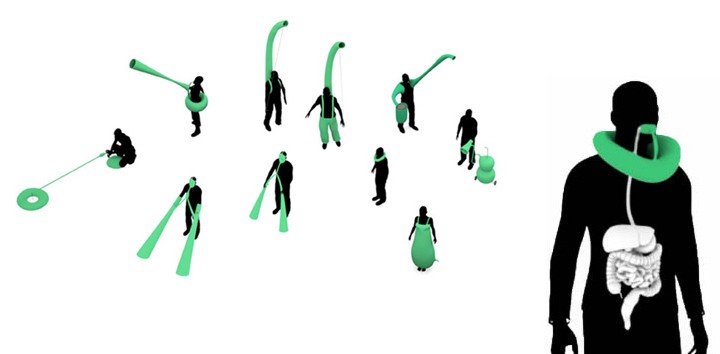Dunne-and-Raby projects imagine near-future scenarios informed by the practices of industrial design. Their work is neither utopian nor dystopian; instead it creates imperfect solutions to techno-cultural problems and embraces conflicting desires.
Dunne describes his work:
"The kind of pleasures you get from reading a book or watching a film, I think are the kinds of things we’re trying to explore in relation to products. How can you design products that provide complex and complicated pleasures?"
"I guess we’re attracted to the bad side of people. The side that is complicated, contradictory, irrational. And we’re really curious if you filled up a room or a space with objects that reflected those values, how that material world would look different from the material world that surrounds us now."1
Design for an Overpopulated Planet, 2010
Dunne and Raby collaborated with writer Alex Burrett and photographer Jason Evans to create several scenarios that examine the implications of a global population boom. In one project, No. 1: Foragers, a community responds to food scarcity by augmenting their digestive systems with a variety of technologies that permit them eat foods that were previously inedible. "What if it were possible to extract nutritional value from non-human foods using a combination of synthetic biology and new digestive devices inspired by the digestive systems of other mammals, birds, fish, and insects?"2 The foragers with help from their augmentations find sustenance in leaves, algae, grass, and flowers.
1 Bill Moggridge, Designing Interactions (Cambridge, MA: MIT Press, 2007; March 2003 interview documented in the book’s companion DVD).
2 Anthony Dunne and Fiona Raby, Speculative Everything: Design, Fiction, and Social Dreaming (Cambridge, MA: MIT Press, 2013), 151.



